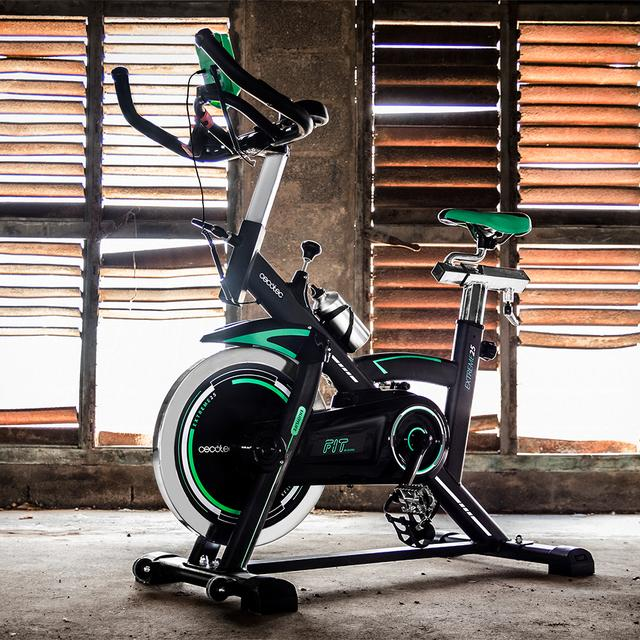
The importance of proper pedal stroke on spin bikes cannot be overstated. It is one of the most crucial aspects of indoor cycling that can help you get the most out of your workout routine. Proper pedal stroke will not only help you avoid injury but also improve your overall cycling performance and endurance. In this article, we will discuss the benefits of proper pedal stroke, how to achieve it and some common mistakes to avoid while cycling on a spin bike.
What is a proper pedal stroke?
The pedal stroke is the motion of your legs as you cycle. It involves a circular motion of the legs that involves pushing down on the pedals, pulling up, and completing the rotation. A proper pedal stroke involves using all the muscles in your legs, rather than relying solely on the quads. It involves a smooth, even motion that uses the entire range of motion of your legs. The key to a proper pedal stroke is to maintain an even pressure on the pedals throughout the entire stroke.
Benefits of proper pedal stroke
Improved efficiency
A proper pedal stroke can help to improve your cycling efficiency. It helps to distribute the load evenly across your legs, reducing the strain on any one muscle group. This means you will be able to cycle for longer periods without getting fatigued easily.
Reduced risk of injury
A proper pedal stroke can help to reduce the risk of injury. It helps to reduce the strain on your knees, ankles and hips, reducing the risk of strains and sprains.
Increased power
A proper pedal stroke can help to increase your cycling power. It allows you to use your entire leg muscles, rather than just your quads, for a more powerful stroke.
Higher endurance
A proper pedal stroke can help to increase your endurance. It allows you to maintain an even pressure on the pedals, reducing the risk of getting tired quickly.
How to achieve a proper pedal stroke
Adjust the bike
The first step to achieving a proper pedal stroke is to adjust the spin bike to your body. This involves adjusting the saddle height, handlebar height and position, and the distance between the saddle and handlebars. Proper bike adjustment will help you achieve a more comfortable, efficient and effective pedal stroke.
Pedal with the balls of your feet
When cycling on a spin bike, you should pedal with the balls of your feet, not your toes or heels. This will help you achieve a more natural and efficient pedal stroke.
Use the full range of motion
To achieve a proper pedal stroke, you should use the full range of motion of your legs. This means pushing down on the pedals, pulling up, and completing the rotation. It’s important to avoid relying solely on your quads and instead use your entire leg muscles.
Pedal with even pressure
To achieve a proper pedal stroke, you should maintain an even pressure on the pedals throughout the entire stroke. This will ensure that you use all your leg muscles evenly, reducing the risk of fatigue and injury.
Mistakes to avoid
Cycling with your toes
Cycling with your toes can lead to strain and injury to your feet, shins and calves. It also reduces your cycling efficiency and power. Make sure you pedal with the balls of your feet for a proper pedal stroke.
Using your quads only
Using your quads only can lead to fatigue and injury to your knees, hips and lower back. It also reduces your cycling efficiency and power. Make sure you use your entire leg muscles for a proper pedal stroke.
Pedaling too fast
Pedaling too fast can lead to a loss of control and injury. It also reduces your cycling efficiency and power. Make sure you maintain a steady, controlled pace for a proper pedal stroke.
Relying on momentum
Relying on momentum rather than using your leg muscles can lead to loss of control and injury. It also reduces your cycling efficiency and power. Make sure you use your leg muscles throughout the entire pedal stroke for a proper pedal stroke.
Conclusion
Proper pedal stroke is essential for anyone who wants to get the most out of their indoor cycling workout. It not only improves your efficiency, power and endurance but also reduces the risk of injury. By adjusting your bike, using the full range of motion, and maintaining an even pressure on the pedals, you can achieve a proper pedal stroke that will help you achieve your fitness goals. Avoiding common mistakes such as cycling with your toes, using your quads only, pedaling too fast, and relying on momentum will also ensure a proper pedal stroke and a safe, effective cycling experience.

